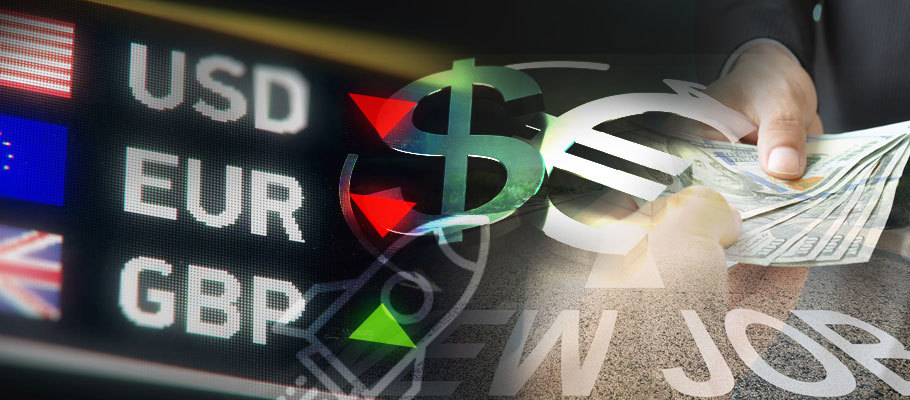
Published: May 18th, 2022
Sterling was up against the Euro and Dollar at mid-week following publication of UK labour market figures that revealed a strong rise in wages and a bigger than expected drop in unemployment.
Numbers from the UK’s Office of National Statistics (ONS) showed that Britain added more than 82,000 jobs in the three months to March, well in excess of what the market was expecting.
The rate of unemployment also made a surprise drop to 3.6 per cent from 3.9 per cent, the lowest level seen in five decades.
'Even with the slowdown in growth seen in March, the UK labour market is simmering with record openings and lateral employment moves,’ said the Confederation of British Industry (CBI) in a press statement.
Average Wages, including bonuses, spiked by seven per cent in March, much more than the 5.5 per cent markets were expecting.
The overall economic print was stronger than expected, sustaining pressure on the Bank of England (BoE) to keep on raising interest rates.
In a labour market where unemployment is low and unfilled vacancies are high, wages tend to rise, which can add to inflation pressures. In the face of this sort of data, the BoE will have to have a policy reaction.
In an interview with Bloomberg, Capital Economics chief economist Paul Scales said ‘we believe that the British labour market will stay tight and growth in wages will continue to speed up; even if the economy shrinks or stalls over the next two quarters. The Bank of England will have little choice but to raise interest rates in order to contain labour-related inflationary pressures.’
Sterling responded as expected, when the GBP to EUR exchange rate leapt after the data release, rising to 1.1874. The GBP to USD rate rose three quarters of a percent to hit 1.2422.
The ONS data could also make Threadneedle Street’s assessments of future UK economic outlook seem overly negative. Bank Governor Andrew Bailey told the Treasury Select Committee on Tuesday that the BoE still expects unemployment to rise in the second half of 2022 as the impact of a cooling economy spreads across sectors and indicators.
Bank economists are assuming that inflation, currently headed for as high as 10 per cent, could stall economic growth as consumers are compelled by higher prices to rein-in spending.
If that happens it might trigger a rise in unemployment, which is why the Bank has maintained that only limited interest rate rises will be required at this point. But that view is at odds with market consensus which is looking for a more aggressive 100 additional basis points of rate rises over the remainder of 2022.
With this week’s labour market data, the BoE may find that it must move closer to the market's expectations.
With unemployment and wage figures both beating expectations, Sterling is benefitting from a rosier picture for the British economy than had been expected.
The positive jobs environment means the Bank of England is under pressure to accelerate monetary policy tightening. With inflation expected to reach as high as 10 per cent, analysts think BoE policymakers will be forced to keep lifting interest rates incrementally, opening the door to further gains for GBP.
The ONS figures show that number of job openings rose to a record 1,295,000 between February and April, a boost of 33,600 from the previous quarter and an increase of 499,200 from level reached in the period January to March 2020, which was before the pandemic.
From January to March of this year the ratio of job vacancies to unemployed people was stuck at 1.0, meanwhile the number of vacancies exceeded the number of people unemployed.
This points to a labour market likely to stay strong for the foreseeable future, even if inflation keeps rising.
Reasons for the tight jobs market range from the reduced number of EU nationals coming to Britain for work, long-term illness rates in the aftermath of Coronavirus, and older workers moving their retirement plans forward in response to the pandemic.
Rising inflation, however, could prompt more people to return to the labour market as the cost-of-living increases and income levels inch upward.
Losses experienced by stock markets and a sudden plunge in cryptocurrency prices will also send more people back into the workforce.
In a market analysis, London’s Pantheon Macroeconomics said markets could find reassurance in the fact that the number of people who technically inactive (stopped looking for work) but who want a job rose by 331,000 in the first quarter of 2022. ‘This suggests that the supply of labour could bounce back in the third quarter.’
If that happens it would reduce pressure on the Bank of England to lift interest rates in line with market expectations.
Sterling started the week by underperforming against major peers as global financial markets headed south while domestic political risks jumped to the fireground in the form of new tensions between London and Brussels over the fate of Northern Ireland.
Prime Minister Boris Johnson is holding a series of meetings in Northern Ireland this week in advance of new legislation aimed at easing trade between Northern Ireland and the rest of Britain.
Johnson says the EU won’t negotiate a long-term solution to the Northern Ireland protocol, interfering with inter-UK trade. The UK government has the right, therefore, to unilaterally address what it sees as a rising domestic crisis.
But officials in Brussels are threatening a punitive response to any such move, which would likely involve trade penalties and legal action.
RBC Capital Markets said in an analyst note that they would be selling the Pound this week, as the risks of another EU-UK flareup over the Northern Ireland created worries that a trade war with the EU could be imminent.